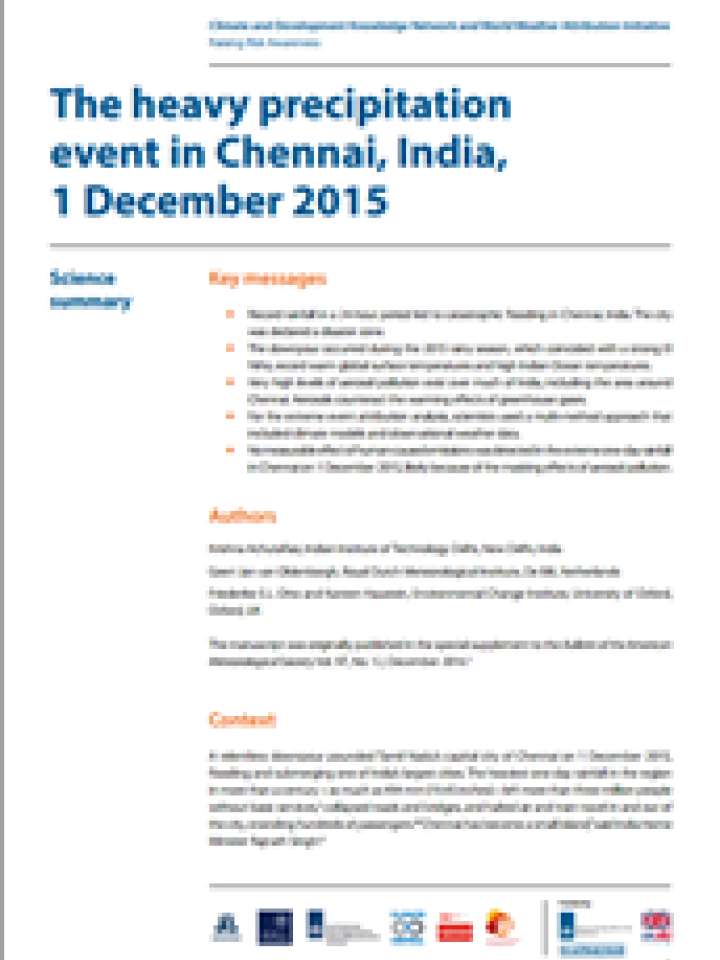Science Summary: The heavy precipitation event in Chennai, India, 1 December 2015
This brief presents findings from the World Weather Attribution (WWA) partnership on climate attribution science following the heavy precipitation event in Chennai, India, 1 December 2015. An analysis was completed to assess whether the downpour which affected Chennai could in part be attributed to human emissions of greenhouse gases in the atmosphere and related climate change.
This science summary outlines the team’s overall methodology, conclusions and the following key messages:
- Record rainfall in a 24-hour period led to catastrophic flooding in Chennai, India. The city was declared a disaster zone;
- The downpour occurred during the 2015 rainy season, which coincided with a strong El Niño, record warm global surface temperatures and high Indian Ocean temperatures;
- Very high levels of aerosol pollution exist over much of India, including the area around Chennai. Aerosols counteract the warming effects of greenhouse gases;
- For the extreme event attribution analysis, scientists used a multi-method approach that included climate models and observational weather data;
- No measurable effect of human-caused emissions was detected in the extreme one-day rainfall in Chennai on 1 December 2015, likely because of the masking effects of aerosol pollution.
Explore further
